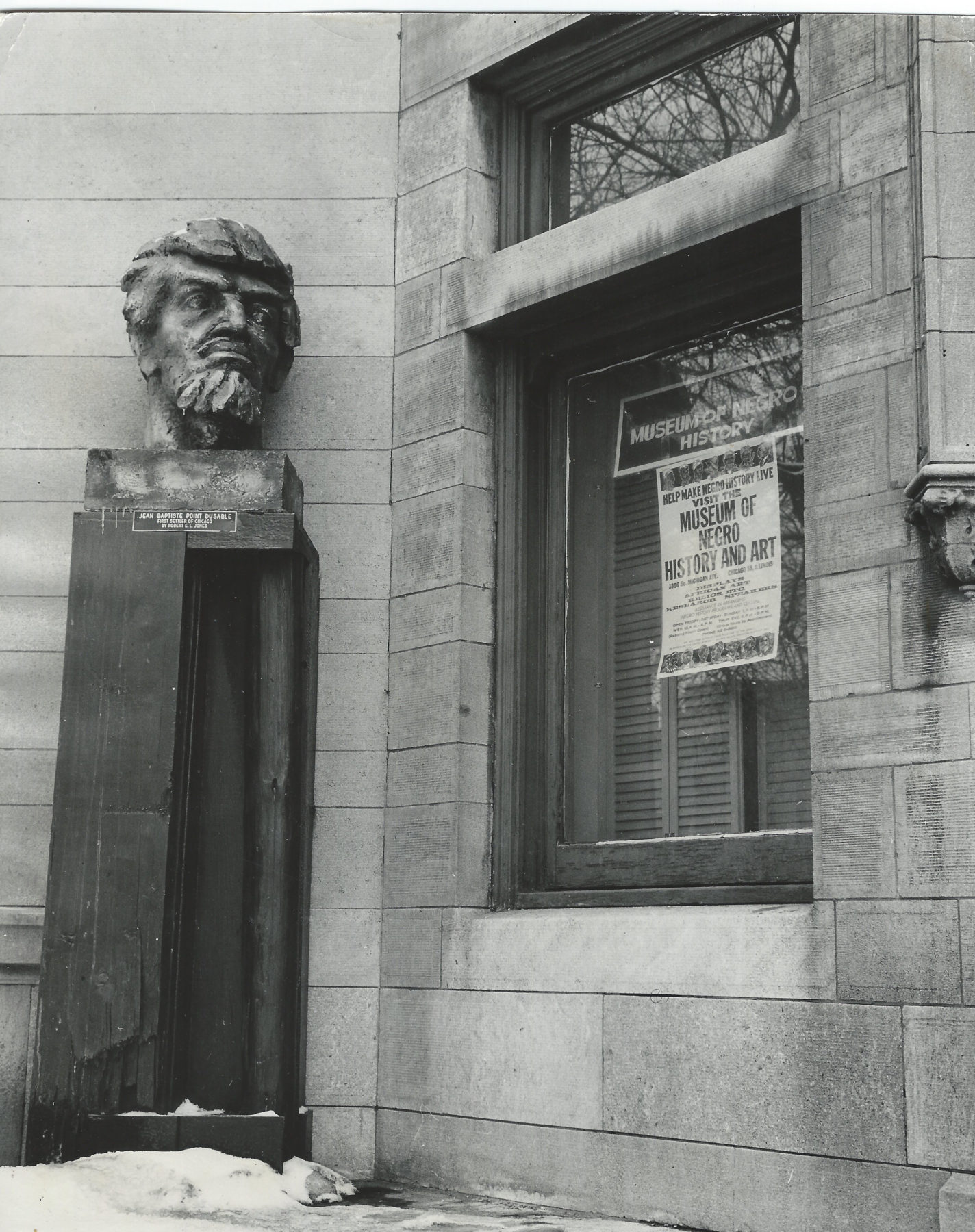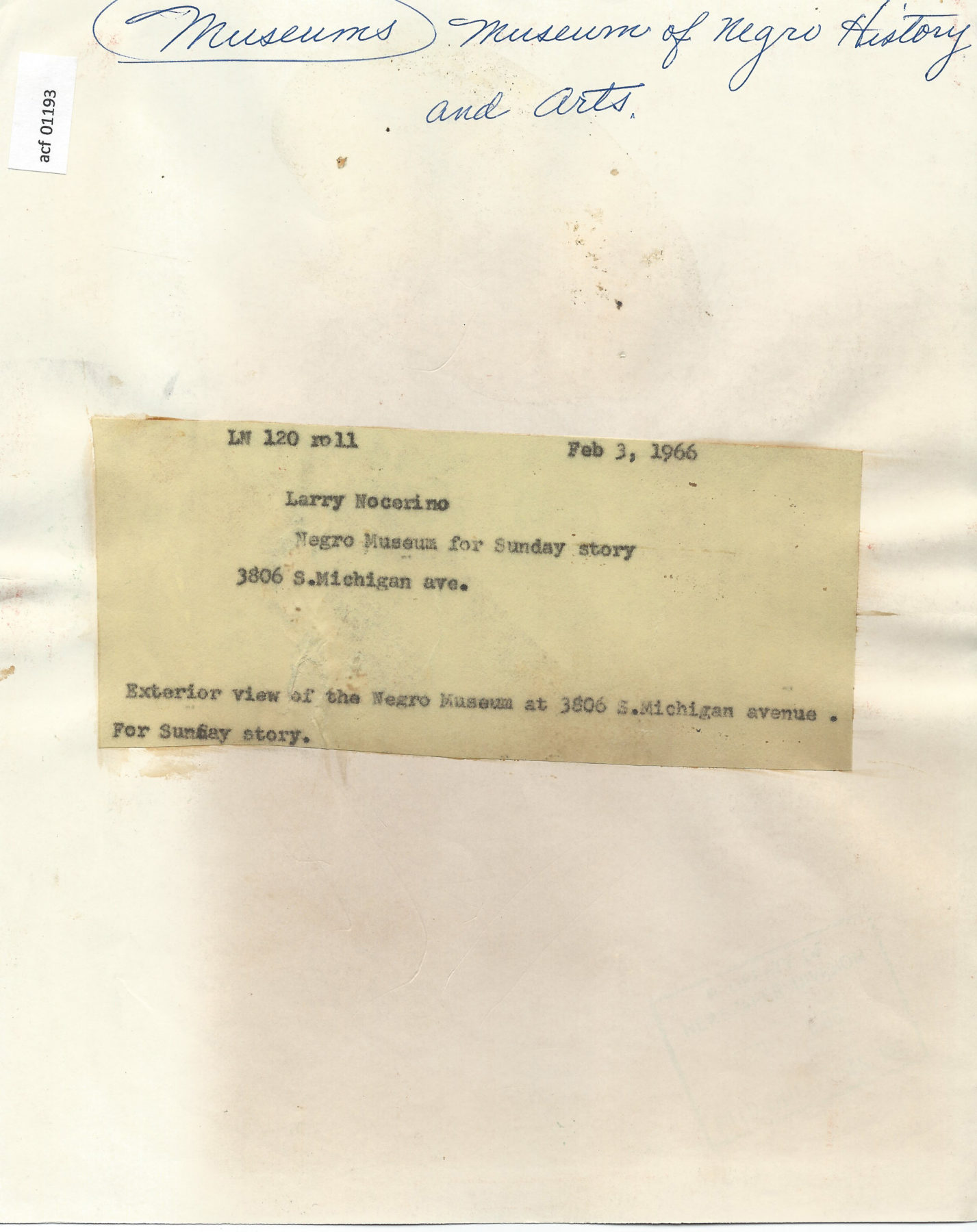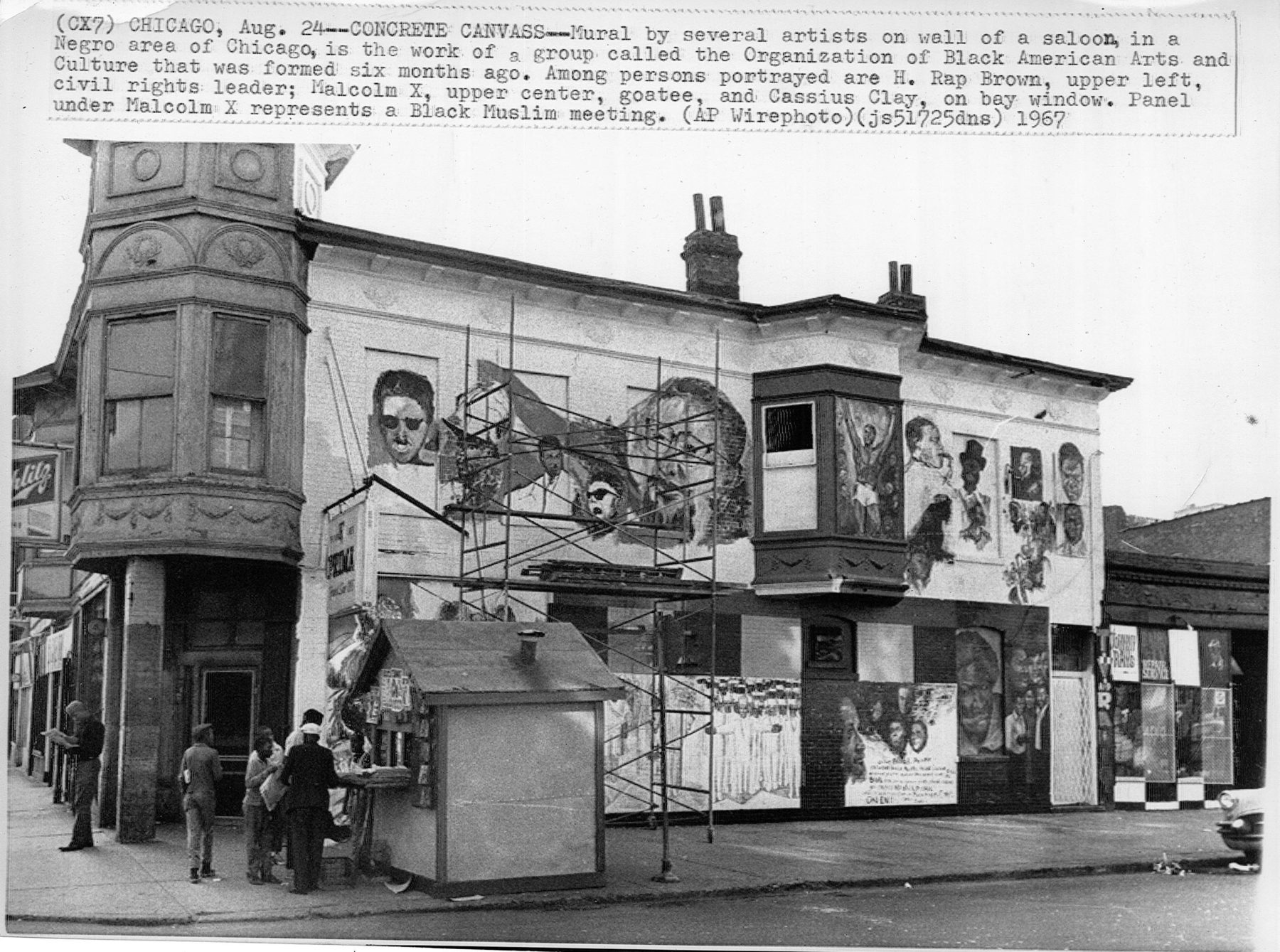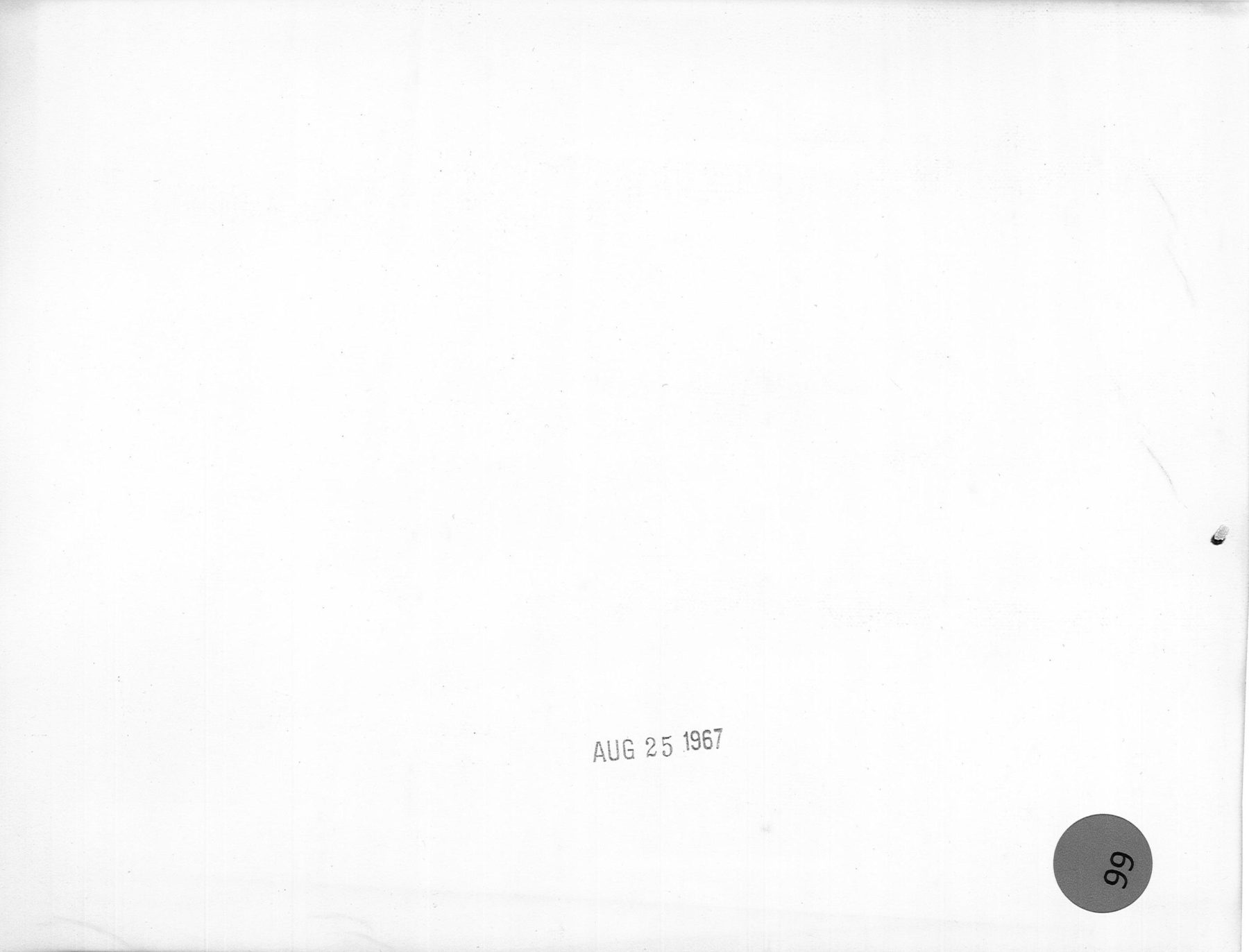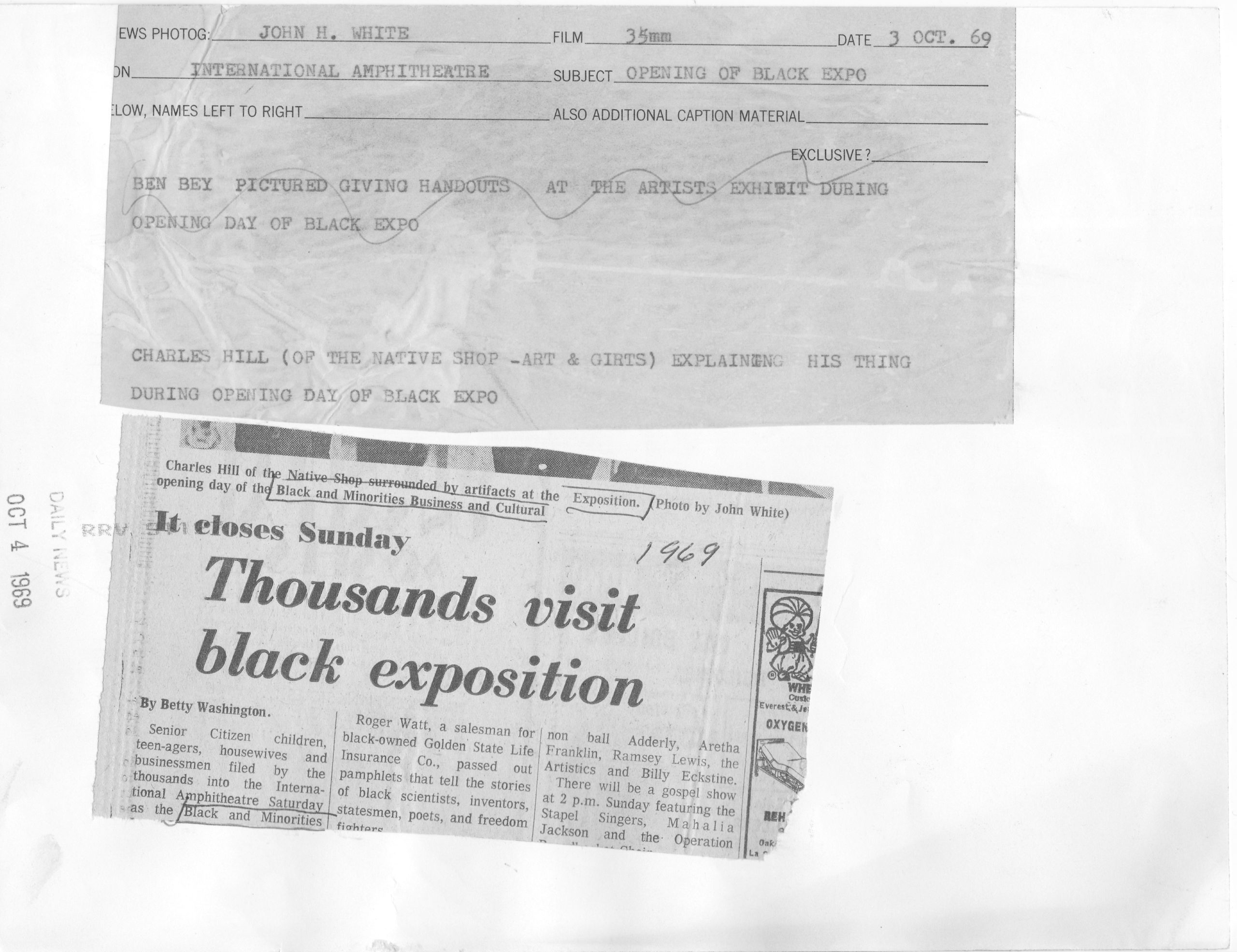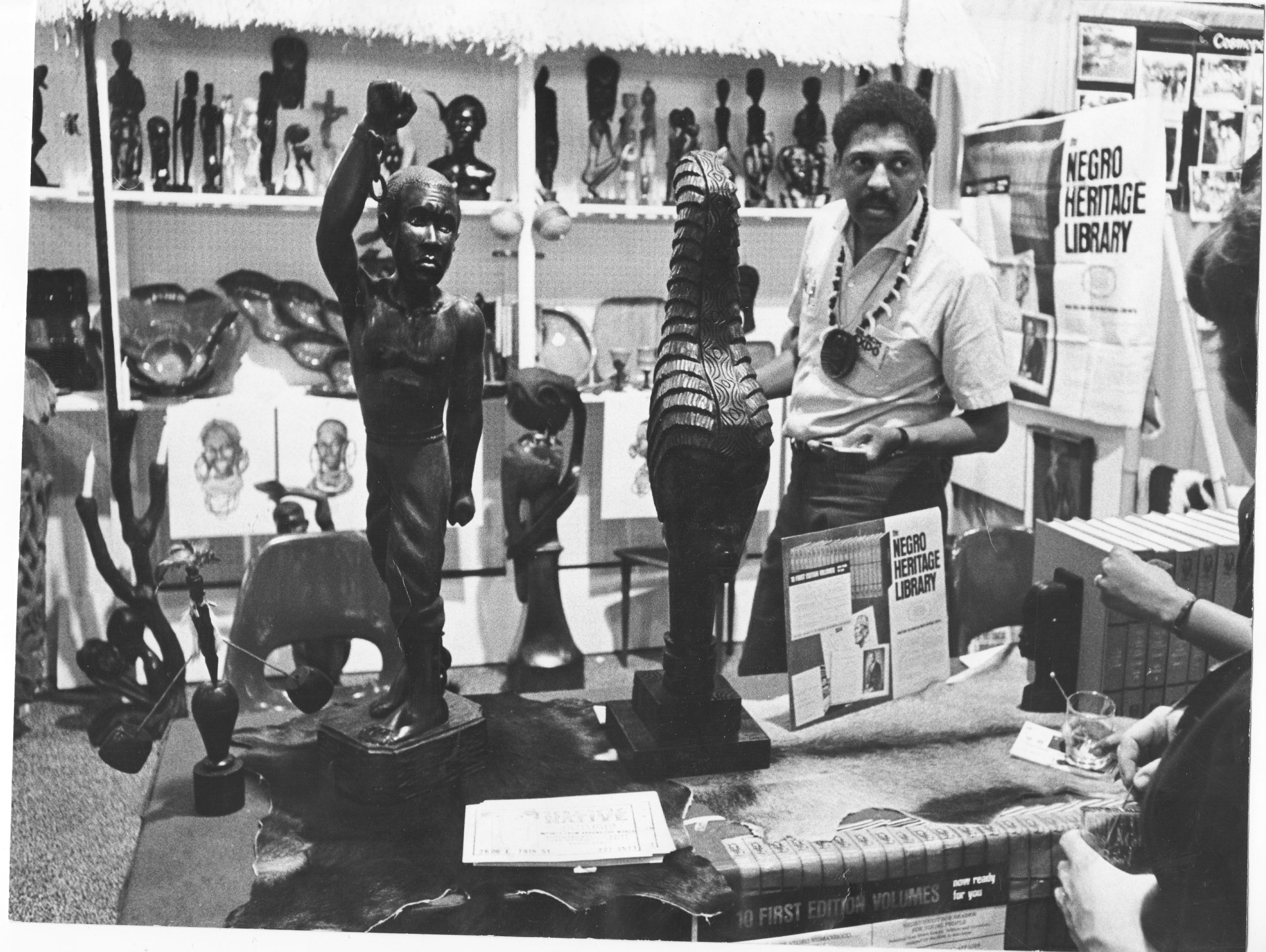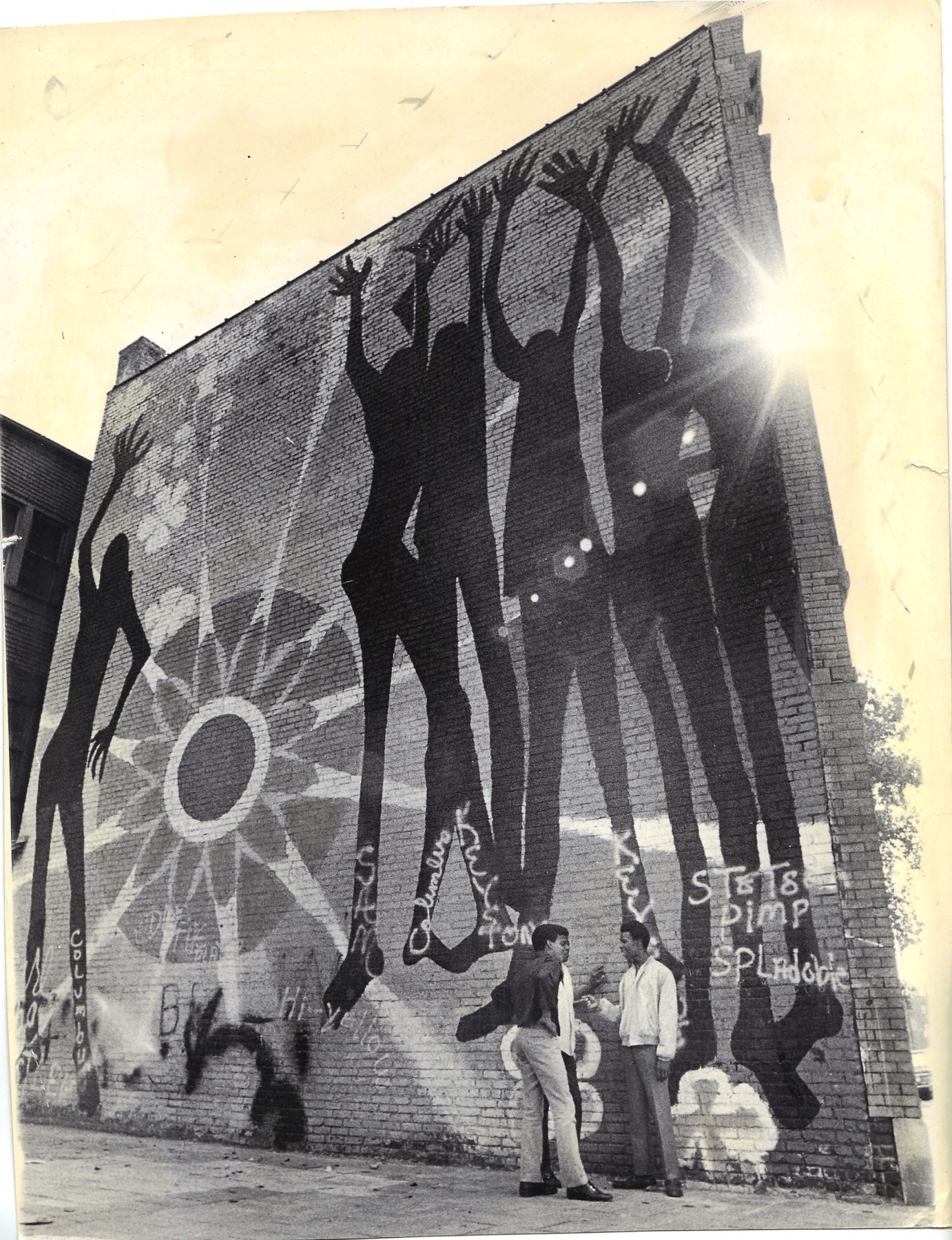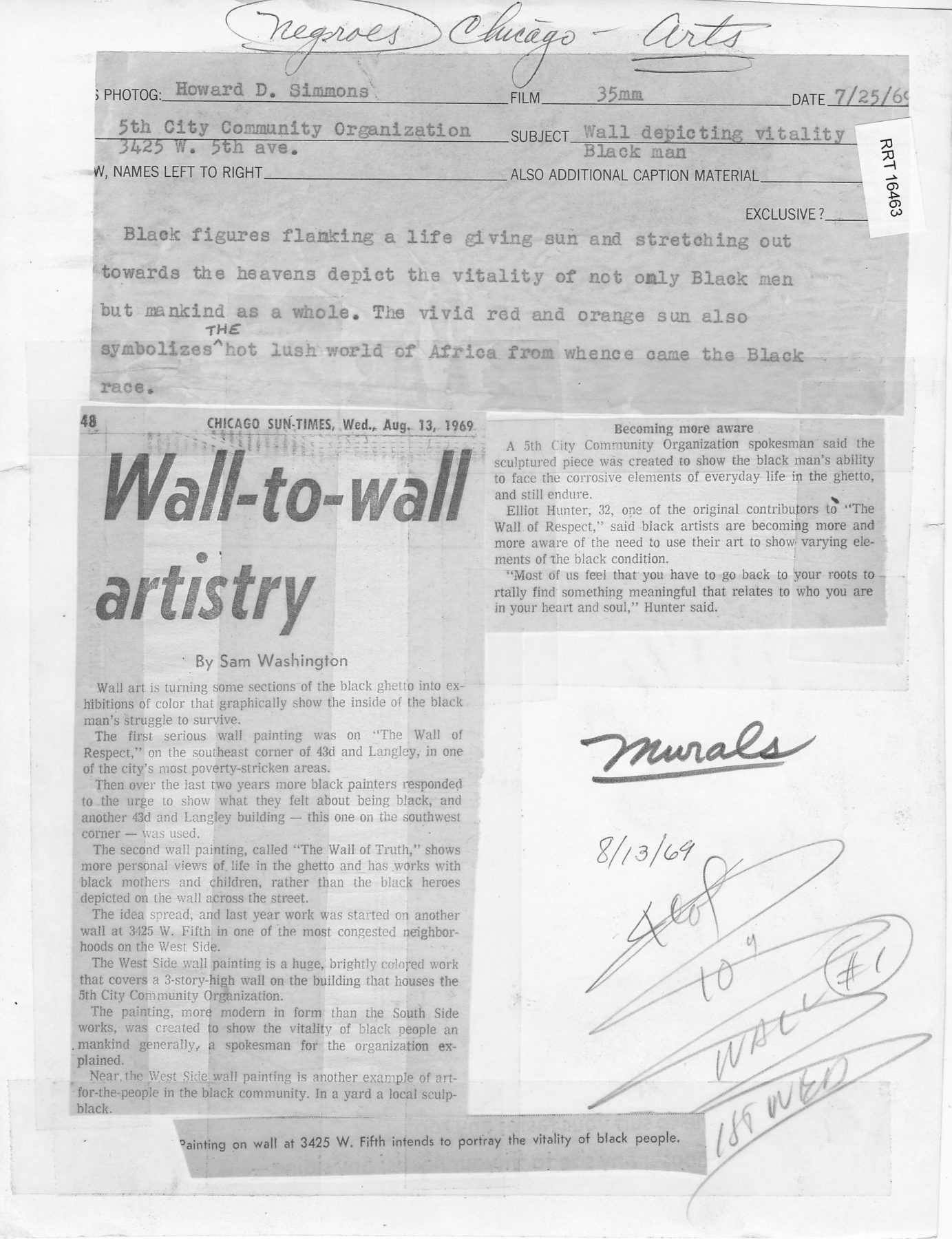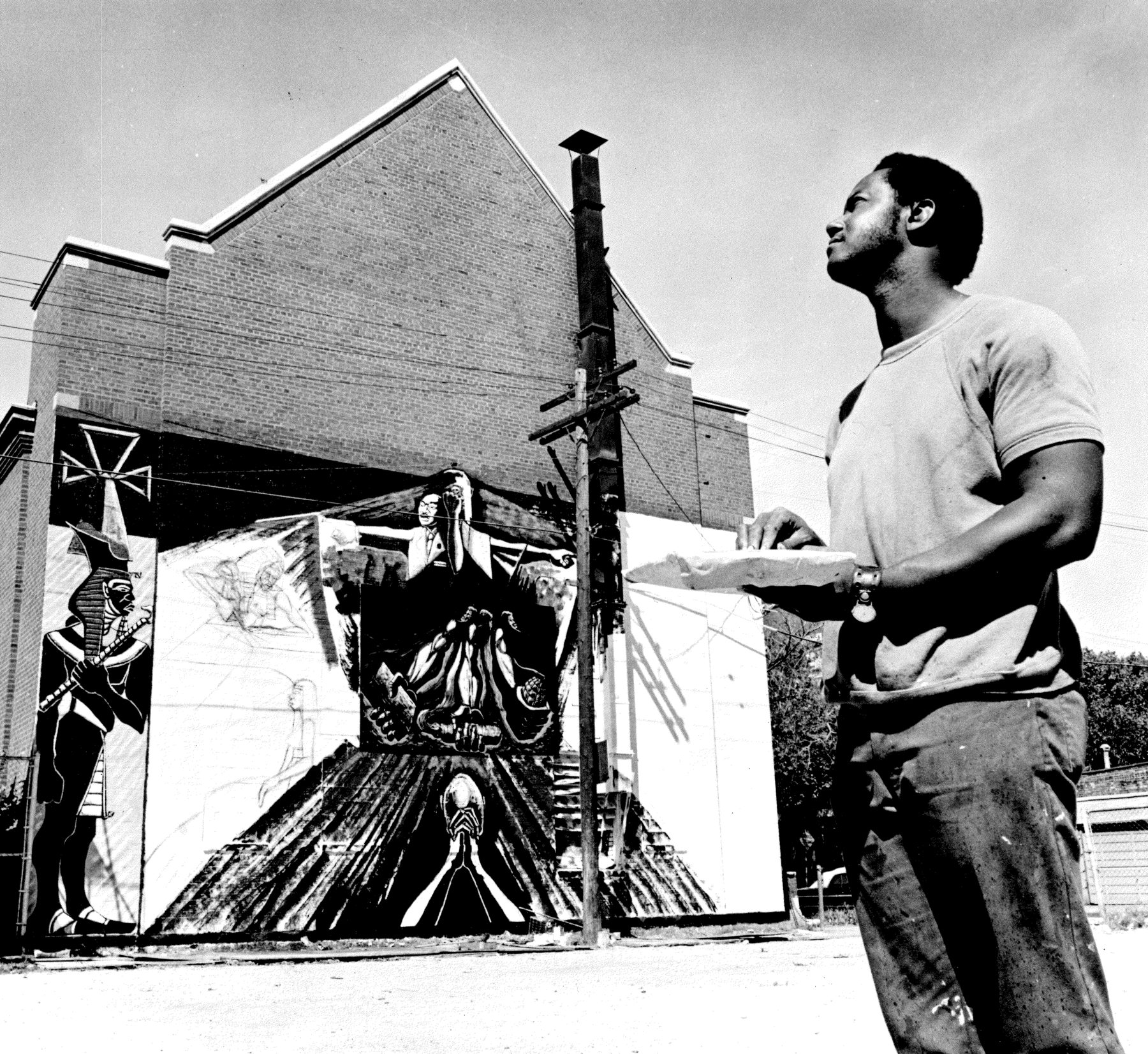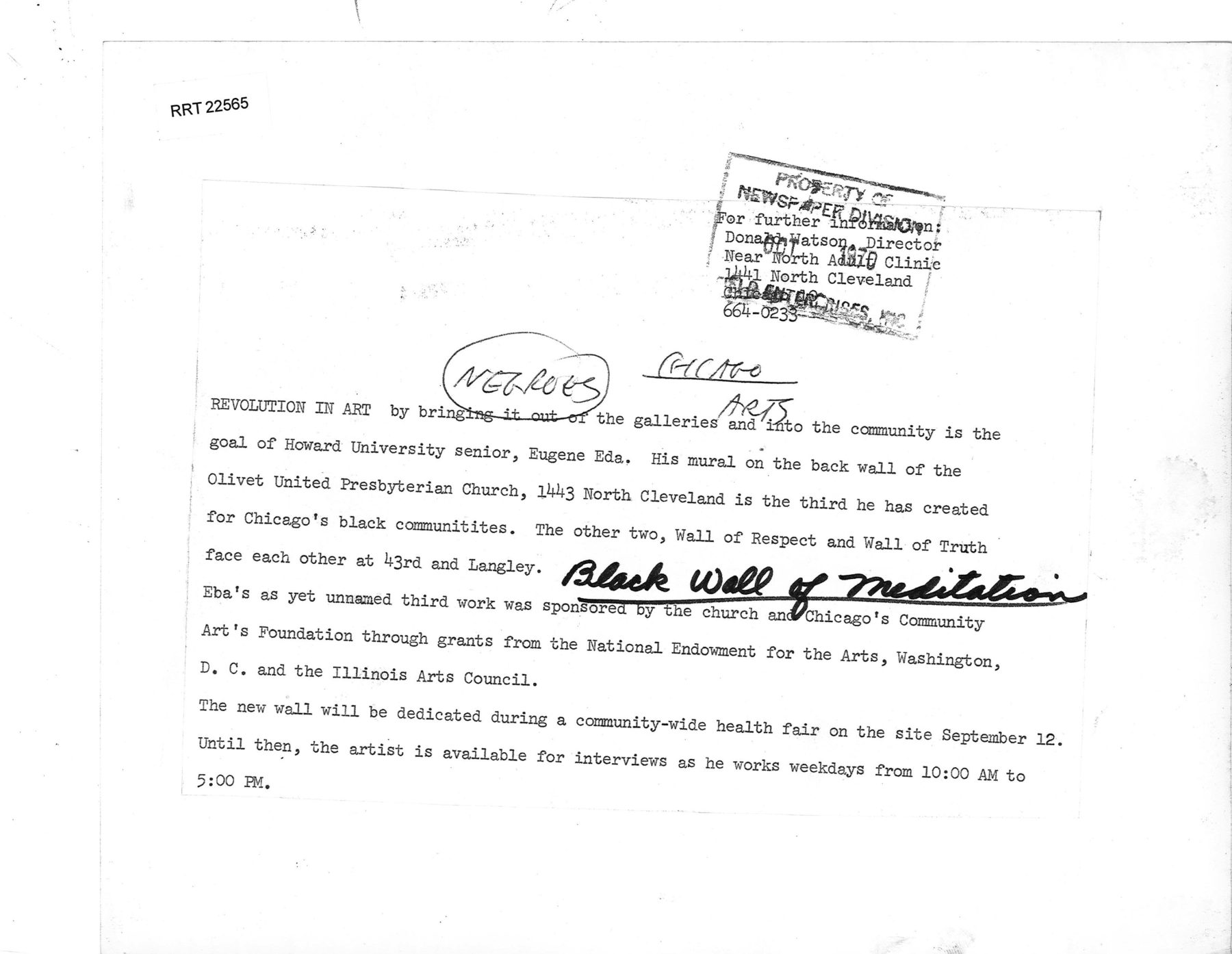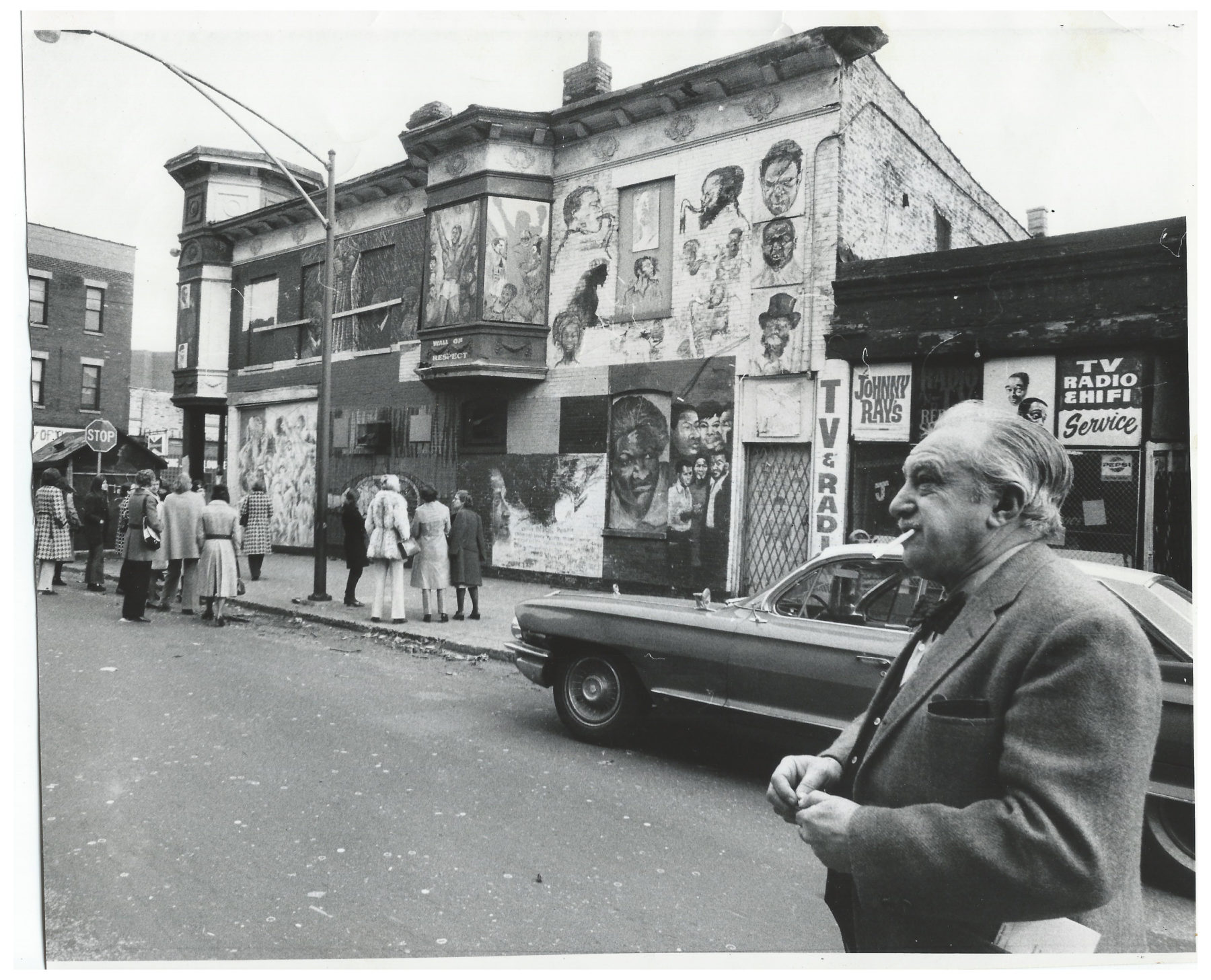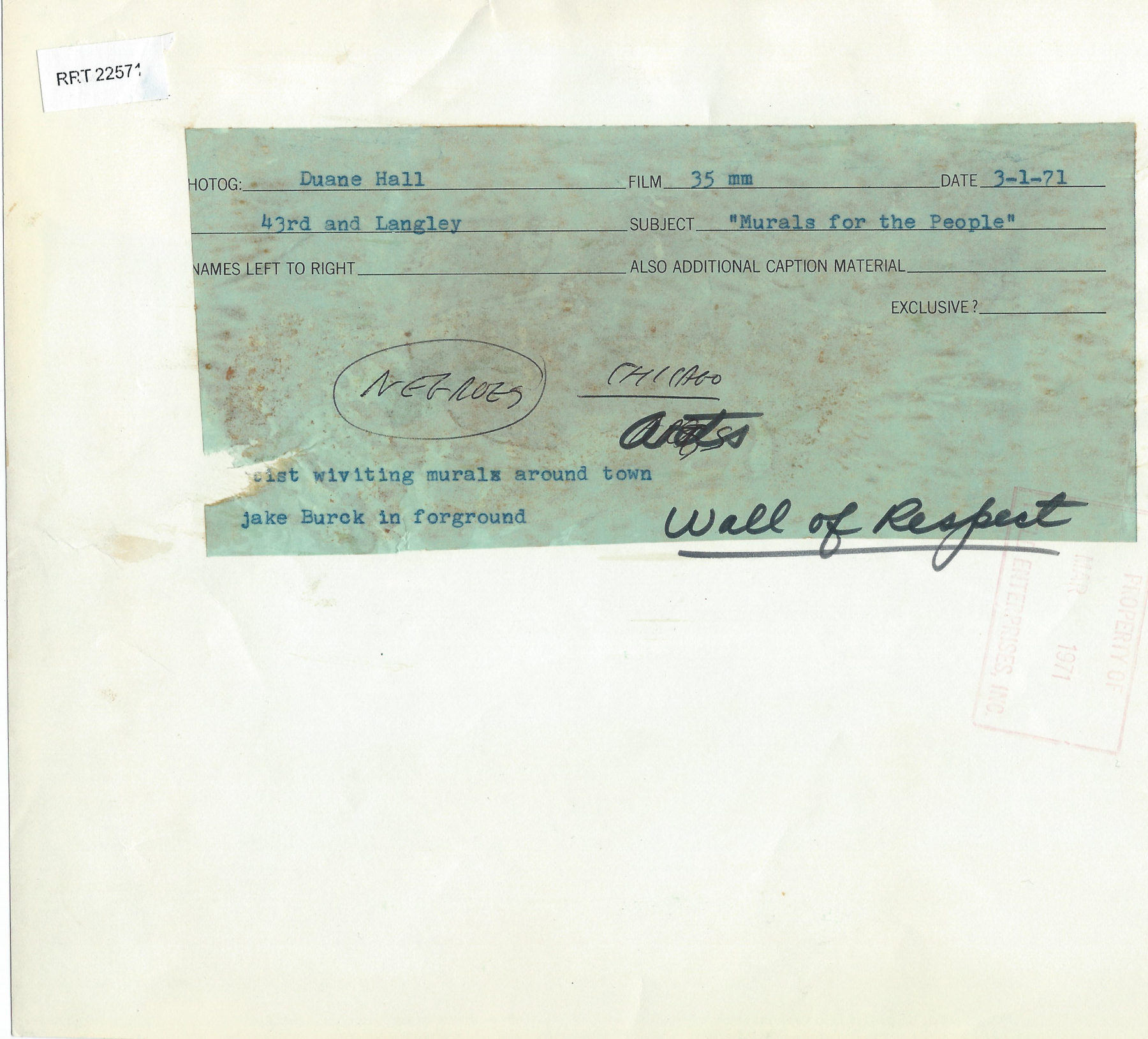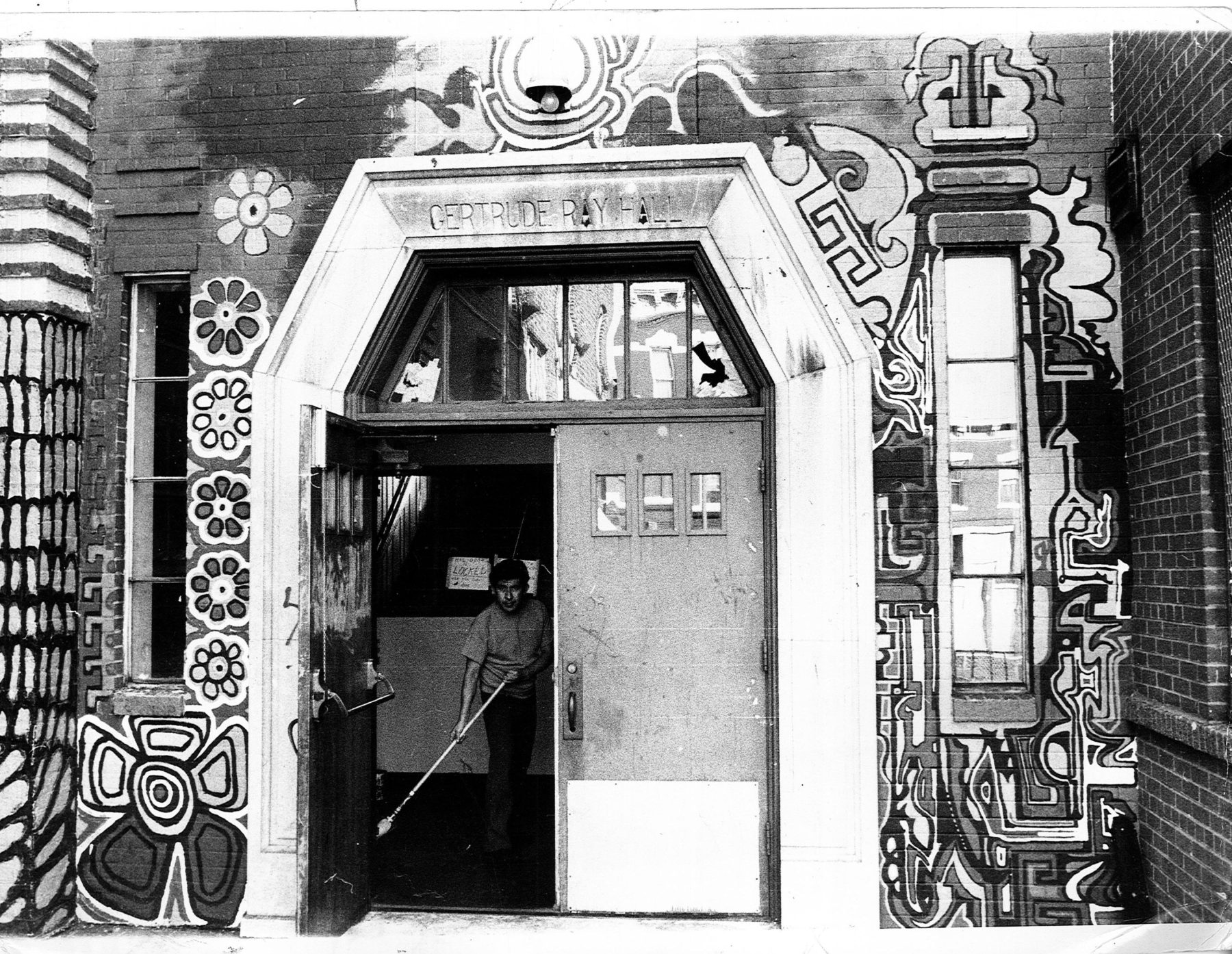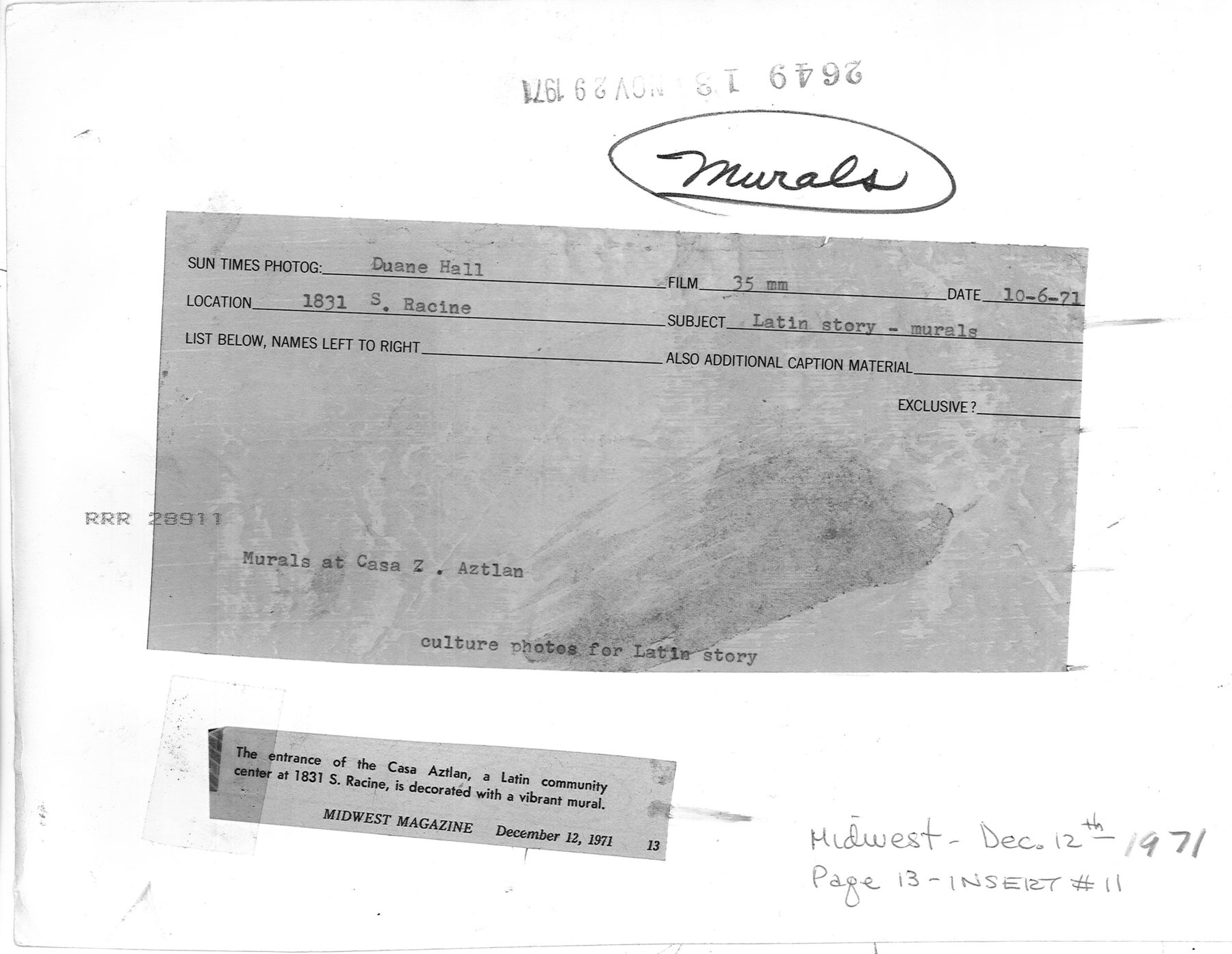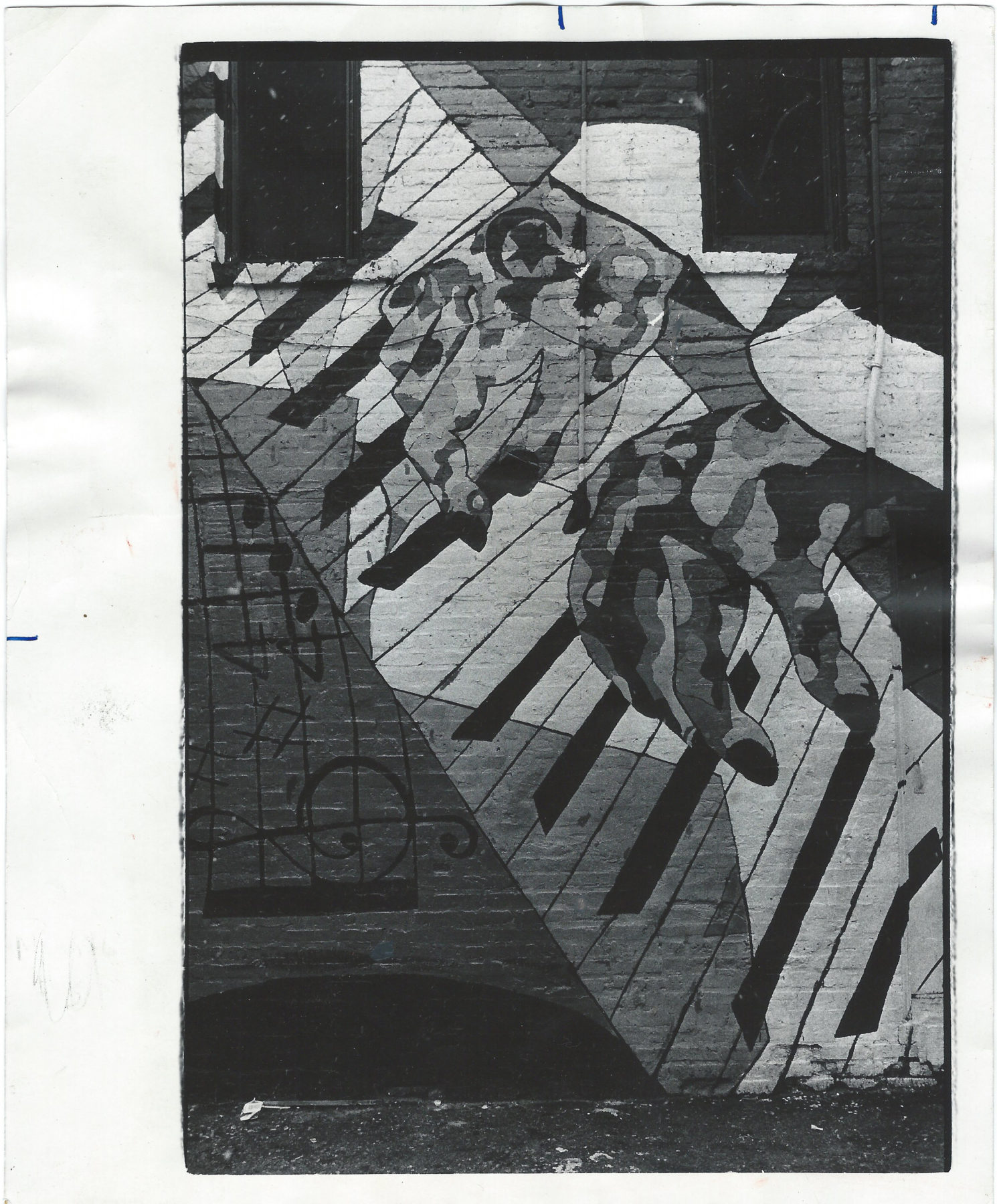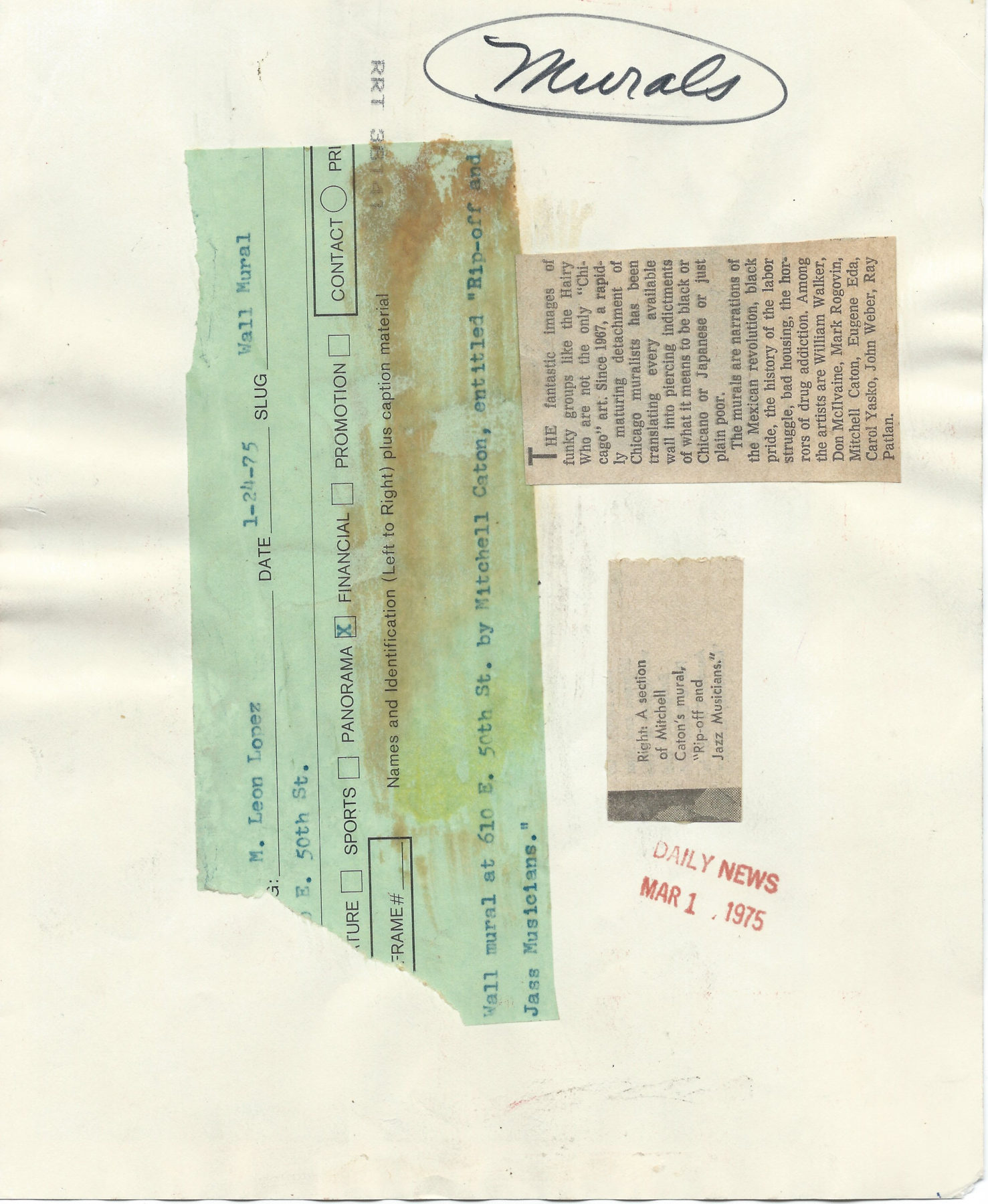1. Murals and Culture

These images represent some of the arts and culture institutions of Black Chicago in the 1960s, as well as a number of important murals that were created as part of Chicago’s vibrant community mural movement. Among the many important institutions devoted to art and culture are the WPA-era South Side Community Art Center, and, across the street from it, Margaret Burroughs’s Museum of Negro Art and History, which later became the DuSable Museum of African American History (1.1). There were also numerous small galleries and shops that sold African artifacts and African-themed crafts, such as The Native Shop (1.3), which exhibited at Chicago’s Black Expo in 1969. The Black Expo was a project of Operation Breadbasket, directed by the young Rev. Jesse Jackson under the auspices of the SCLC (Dr. Martin Luther King, Jr.’s Southern Christian Leadership Conference).
The Wall of Respect mural, created in August 1967 by the Visual Artists Workshop of the Organization of Black American Culture (OBAC), with the essential participation of the accomplished muralist William Walker, was a watershed event in Chicago’s Black Arts Movement. In both painting and photographs that were printed and attached to the wall surface, the mural depicted Black heroes and heroines in seven areas of excellence: politics, athletics, jazz, rhythm and blues, religion, literature, and theater; a nearby newsstand represented dance. The first (1.2) of the two news photographs depicting the Wall shows it in progress, under scaffolding; the second (1.6) displays a tour organized by Chicago’s Museum of Contemporary Art during its 1971 Murals for the People exhibition. (Jacob Burck, in the right foreground, was a leftist Jewish artist.) In this innovative exhibition, four muralists were invited into the galleries to paint murals on portable panels, which, following the exhibition, were placed at relevant neighborhood sites. One of the artists who painted murals in the Murals for the People exhibition was Eugene “Eda” Wade, who had made a controversial intervention into the Wall of Respect after its initial creation. At the museum, Eda created panels intended to be placed at the top of the Black Wall of Meditation, painted on the Olivet United Presbyterian Church on the near North Side. In the photo presented here (1.5), he is shown in front of the church mural in progress. (In the end, problems with electrical lines prevented the upper-level panels from being installed.)
Photographer: Larry Nocerino
Chicago Sun-Times
2/3/66
AP Wirephoto
8/24/67
Chicago Daily News
10/4/69
Photographer: Howard D. Simmons
Chicago Sun-Times
7/25/69, published 8/13/69
Murals were typically created in collaboration with neighborhood residents, and often adorned buildings and spaces that held significance in those communities either as institutions or as informal gathering spaces. The Fifth City Community Organization, which commissioned a mural (1.4) on the near west side of Chicago, was a neighborhood development organization that brought together residents to participate in self-governance and cultural activities. The Casa Aztlán was a former settlement house, whose services, in the 1960s, had focused on an older wave of central European immigrants to the lower west side neighborhood of Pilsen. The local Chicano Movement occupied and reclaimed the space as a social and cultural center for the predominantly Mexican American neighborhood in 1970. Ray Patlán, a close associate of William Walker, created murals on the façade with Aurelio Diaz and a group of students (1.7).
Some community spaces were just as important, though more informal. Working with several collaborators, the brilliant muralist Mitchell Caton painted a monumental mural (1.8)—sometimes called Rip-Off, sometimes Universal Alley—that adorned the walls at “The Alley,” an informal music venue and hangout near Washington Park on Chicago’s South Side. This photograph presents just one small detail of the colorful mural. Along with Walker, Caton was one of the most accomplished artists to emerge in Chicago’s mural movement. His work often pursues the theme of collaboration among the arts, focusing on musical creation as a key subject matter alongside social and political issues of the time.
Photographer unknown
Field Enterprises (Chicago Sun Times or Chicago Daily News)
9/70, stamped 10/70
Photographer: Duane Hall
Field Enterprises (Chicago Sun Times or Chicago Daily News)
3/1/71
Photographer: Duane Hall
Midwest Magazine
10/6/71, published 12/12/71
Photographer: Leon Lopez
Chicago Daily News
1/24/75, published 3/1/75
